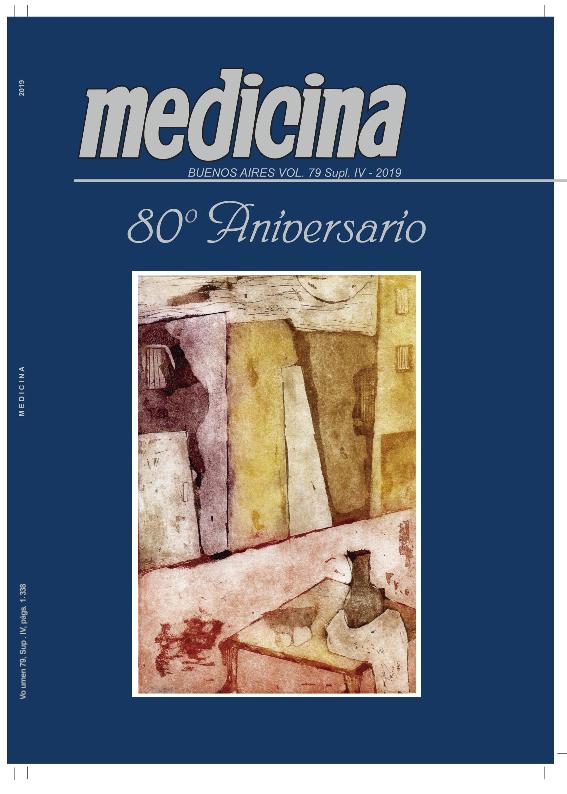Evento
Metabolic stability of glifosate in ruminal content from cattle: partition between particulate and fluid digestive material
Tipo del evento:
Reunión
Nombre del evento:
LXIV Reunión Anual de la Sociedad Argentina de Investigación Clínica; LI Reunión Anual de la Asociación Argentina de Farmacología Experimental; XXI Reunión Anual de la Sociedad Argentina de Biología; XXXI Reunión Anual de la Sociedad Argentina de Protozoología; IX Reunión Anual de la Asociación Argentina de Nanomedicinas y VI Reunión Científica Regional de la Asociación Argentina de Ciencia y Tecnología de Animales de Laboratorio
Fecha del evento:
13/11/2019
Institución Organizadora:
Sociedad Argentina de Investigación Clínica;
Asociación Argentina de Farmacología Experimental;
Sociedad Argentina de Biología;
Sociedad Argentina de Protozoología;
Asociación Argentina de Nanomedicinas;
Asociación Argentina de Ciencia y Tecnología de Animales de Laboratorio;
Título de la revista:
Medicina (Buenos Aires)
Editorial:
Fundación Revista Medicina
ISSN:
0025-7680
Idioma:
Español
Clasificación temática:
Resumen
Glyphosate (GLP) is one of the most commonly pesticides delivered to the environment. Farm animals could be exposed to both GLP and aminomethylphosphonic acid (AMPA, the major GLP metabolite) present in surface and groundwater, but also in foodstuffs used for preparation of concentrate feeds. For instance, detectable levels of GLP were observed in the urine of dairy cows chronically exposed to the herbicide present in their feed. In cattle, the rumen plays a central role in the pre-systemic metabolism of xenobiotics, thus protecting the organism against potentially harmful chemical compounds. This work evaluated the chemical stability of GLP in the ruminal environment. Ruminal contents from 3 steers were collected in a local abattoir. Samples were roughly filtered, kept at 37°C and transported to the laboratory. Aliquots of both whole ruminal content and fluid phase were incubated (3-6 h) in anaerobiosis with GLP (12.5 µg/mL). Metabolic viability of ruminal contents was assessed by the measurement of the SO-reduction of the anthelmintic albendazole sulfoxide (ABZSO). These assays were carried out in the absence (controls) and in presence of GLP. Incubations of boiled (inactive) ruminal content and fluid were used as controls. Samples were analysed by HLPC with fluorescence detection. Incubated ruminal contents were subsequentially centrifuged for determination of the amounts of the herbicide in the fluid phase and in the particulate material. GLP was not metabolised neither in the ruminal content nor in the fluid phase. The percentage of GLP associated to the particulate material ranged between 5.7 (3 h) and 11.2 (6 h). GLP did not affect the SO-reduction of ABZSO. These results may indicate that the ruminal environment is not involved in the pre-systemic metabolism of GLP. As GLP is a hydrophilic xenobiotic, the highest proportion of the herbicide is solubilised in the fluid phase of the ruminal content which may influence in its rate of absorption after ingestion.
Palabras clave:
PESTICIDAS
,
CONTENIDO RUMINAL
,
METABOLISMO
,
GLIFOSATO
Archivos asociados
Licencia
Identificadores
Colecciones
Eventos(CIVETAN)
Eventos de CENTRO DE INVESTIGACION VETERINARIA DE TANDIL
Eventos de CENTRO DE INVESTIGACION VETERINARIA DE TANDIL
Citación
Metabolic stability of glifosate in ruminal content from cattle: partition between particulate and fluid digestive material; LXIV Reunión Anual de la Sociedad Argentina de Investigación Clínica; LI Reunión Anual de la Asociación Argentina de Farmacología Experimental; XXI Reunión Anual de la Sociedad Argentina de Biología; XXXI Reunión Anual de la Sociedad Argentina de Protozoología; IX Reunión Anual de la Asociación Argentina de Nanomedicinas y VI Reunión Científica Regional de la Asociación Argentina de Ciencia y Tecnología de Animales de Laboratorio; Mar del Plata; Argentina; 2019; 286-287
Compartir




